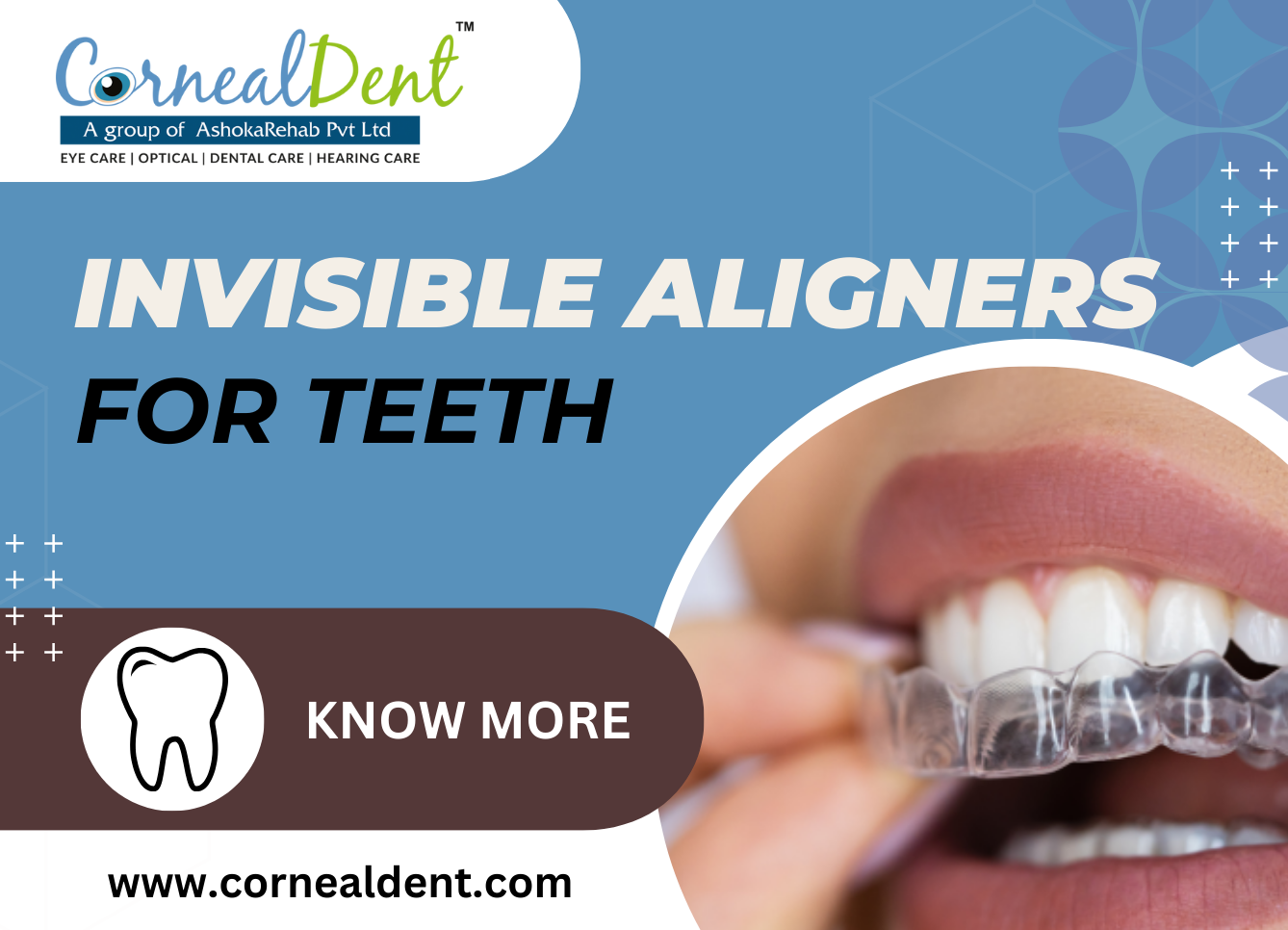
Invisible aligners have revolutionized the field of orthodontics, offering a discreet and convenient alternative to traditional braces. This comprehensive guide will delve into the world of invisible aligners, exploring what they are, how they work, what conditions they treat, their suitability for different individuals, and the pros and cons of using them. We will also address some frequently asked questions to provide a thorough understanding of this innovative dental solution.
What are Invisible Aligners/Clear aligners?
Invisible or clear aligners are custom-made, transparent trays designed to straighten teeth gradually. Unlike traditional metal braces, which are highly visible, invisible aligners are almost undetectable when worn, making them a popular choice for those seeking a more aesthetically pleasing orthodontic treatment. These aligners are made from medical-grade, BPA-free plastic and are designed to fit snugly over the teeth.
How Do Invisible Aligners Work?
Consultation and Assessment: The first step involves a consultation with an orthodontist or dentist who assesses the patient’s dental health and determines if invisible aligners are a suitable treatment option. This often includes taking X-rays, photographs, and digital scans or physical impressions of the teeth.
Custom Treatment Plan: Using the gathered information, a custom treatment plan is created. Advanced software is used to map out the precise movements of the teeth throughout the treatment period. Patients can often see a digital preview of how their teeth will look after treatment.
Manufacturing the Aligners: Based on the treatment plan, a series of custom aligners is manufactured. Each set of aligners is designed to be worn for about one to two weeks before moving on to the next set. Each aligner applies controlled force to specific teeth, gradually shifting them into the desired position.
Wearing the Aligners: Patients must wear their aligners for 20-22 hours per day, removing them only for eating, drinking (anything other than water), brushing, and flossing. Regular check-ups with the orthodontist are scheduled to monitor progress and make any necessary adjustments.
Completion and Retention: Once the treatment is complete, patients are typically provided with retainers to wear at night to maintain their new smile. This helps ensure that the teeth remain in their new positions.
What Do Invisible Aligners Treat?
Invisible aligners are versatile and can treat a variety of dental issues, including:
When there isn’t enough space in the jaw for all the teeth to fit comfortably, causing them to overlap or twist.
Spaces or gaps between teeth can be due to abnormal growth of the jawbone or missing teeth.
When the upper front teeth overlap significantly over the lower teeth.
When the lower teeth protrude past the upper front teeth.
When some of the upper teeth sit inside the lower teeth rather than outside, leading to tooth wear and misalignment.
When the upper and lower teeth don’t meet properly, leaving a gap even when the mouth is closed.
Are Invisible Aligners for Everyone?
While invisible aligners are a great option for many, they are not suitable for everyone. Several factors determine if a person is a good candidate for this treatment:
Type of Dental Issue: While invisible aligners can address a wide range of dental problems, severe or complex cases may require traditional braces or other orthodontic treatments.
Age: Invisible aligners are commonly used for teenagers and adults. They may not be suitable for younger children whose teeth and jaws are still developing.
Commitment to Treatment: Successful treatment with invisible aligners requires a high level of commitment from the patient. Aligners must be worn for the recommended 20-22 hours per day and maintained properly.
Oral Health: Good oral health is essential for aligner treatment. Issues such as gum disease or cavities must be addressed before starting treatment.
Pros and Cons of Invisible Aligners
PROS

Aesthetic Appeal: The primary advantage of invisible aligners is their discreet appearance. They are almost invisible when worn, making them an attractive option for those concerned about the appearance of traditional braces.
Comfort: Made from smooth plastic, aligners are more comfortable than metal braces, which can cause irritation and sores in the mouth.
Removability: Aligners can be removed for eating, drinking, brushing, and flossing, allowing for better oral hygiene and no food restrictions.
Predictability: Advanced digital planning allows patients to see a preview of their expected results before starting treatment.
Fewer Office Visits: Aligners typically require fewer orthodontic visits compared to traditional braces, making them convenient for busy individuals.
CONS
Compliance Required: Successful treatment relies on the patient wearing the aligners for the recommended hours each day. Failure to do so can prolong treatment time and affect results.
Cost: Invisible aligners can be more expensive than traditional braces, though this varies depending on the provider and the complexity of the case.
Not Suitable for Complex Cases: Severe orthodontic issues may require more intensive treatment with traditional braces or other orthodontic methods.
Potential Discomfort: While generally more comfortable than braces, aligners can still cause temporary discomfort, especially when switching to a new set.
Maintenance: Aligners must be cleaned regularly to avoid staining and ensure proper hygiene. They can also be easily misplaced or lost since they are removable.
FAQs About Invisible Aligners
1. How long does treatment with invisible aligners typically take?
2. Can I eat and drink with my aligners on?
3. How do I clean my aligners?
4. What happens if I lose or damage an aligner?
Conclusion
Invisible aligners offer a modern, discreet solution for straightening teeth, providing numerous benefits over traditional braces. They are an excellent option for many individuals, though not suitable for everyone. By understanding how they work, what they treat, and the pros and cons, you can make an informed decision about whether invisible aligners are the right choice for you.
If you have further questions or concerns, consult with an orthodontist to discuss your specific needs and treatment options.
Our orthodontist, at CornealDent, can help you in this regard. Call us now. We can help you get back your confident smile!
